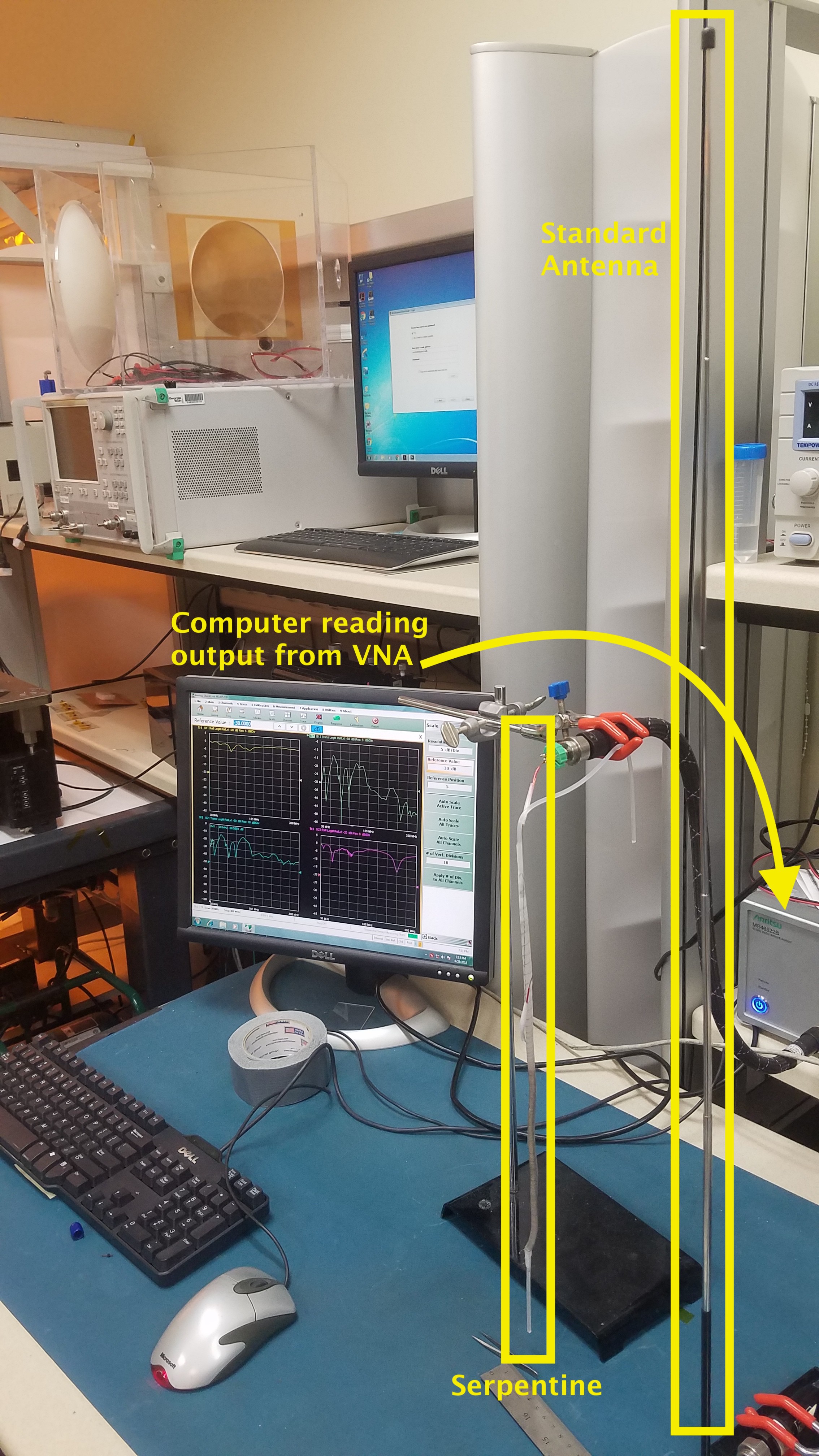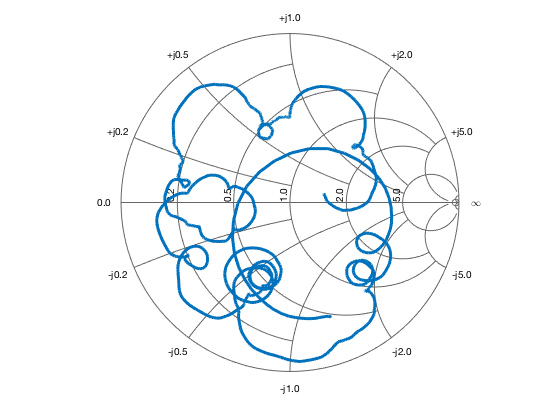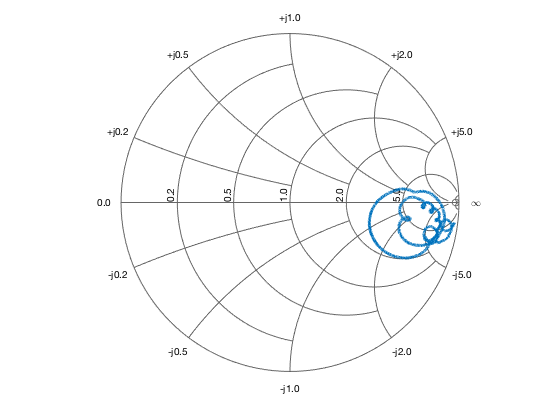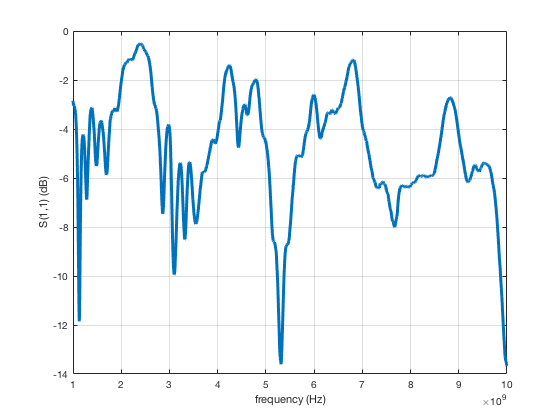Comprised of helical conductors, our sensor may also be used as an antenna. To explore its antenna nature, we experimentally measured the S11 antenna characteristic from 30MHz to 10GHz (Upper bound chosen because of the limitation of the measuring equipment) and plotted the results on a Impedance Smith Chart. The best S11 parameter value obtained after first few runs of the experiments was 0.2072 at 10.0 GHz, which implies that about 80% of power delivered to the antenna is transmitted out, or used up internally. It is our ongoing research to optimize this antenna nature of Serpentine and build a system for self-powered sensing and self-powered wireless communication.
Using Serpentine not only as an self-powered sensing interface but also as a self-powered antenna for communication could revolutionize the way humans interact with computing devices. Interactions themselves shall be sufficient to generate electrical signals for sensing and simultaneous wireless communication without external power source or sensing and communicating instruments.
Today batteries are omnipresent in computing devices for sensing and communication. However, battery replacement and disposal burdens the environment, and such battery use is not sustainable.
Nonetheless, with Serpentine we shall soon eliminate the need of such external sources of power, thus, developing a self-sustaining system which is environmentally clean, and may be incorporated into ubiquitous computing devices.





 fereshteh
fereshteh
Discussions
Become a Hackaday.io Member
Create an account to leave a comment. Already have an account? Log In.